
RAF proto-oncogene serine/threonine-protein kinase, also known as proto-oncogene c-RAF or simply c-Raf or even Raf-1, is an enzyme that in humans is encoded by the RAF1 gene. The c-Raf protein is part of the ERK1/2 pathway as a MAP kinase (MAP3K) that functions downstream of the Ras subfamily of membrane associated GTPases. C-Raf is a member of the Raf kinase family of serine/threonine-specific protein kinases, from the TKL (Tyrosine-kinase-like) group of kinases.
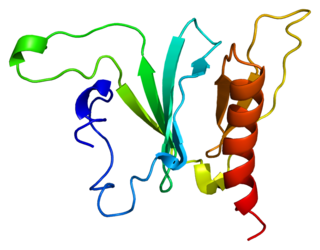
Son of sevenless homolog 1 is a protein that in humans is encoded by the SOS1 gene.

Ras homolog gene family, member B, also known as RHOB, is a protein which in humans is encoded by the RHOB gene.
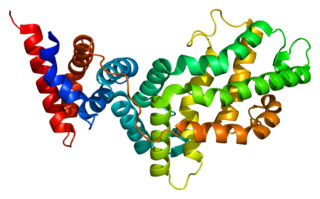
RAS p21 protein activator 1 or RasGAP, also known as RASA1, is a 120-kDa cytosolic human protein that provides two principal activities:

ADP-ribosylation factor 1 is a protein that in humans is encoded by the ARF1 gene.

Ras GTPase-activating-like protein IQGAP1 (IQGAP1) also known as p195 is a ubiquitously expressed protein that in humans is encoded by the IQGAP1 gene. IQGAP1 is a scaffold protein involved in regulating various cellular processes ranging from organization of the actin cytoskeleton, transcription, and cellular adhesion to regulating the cell cycle.
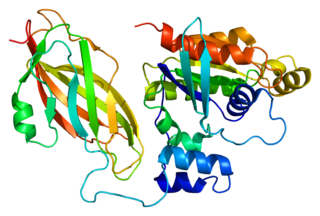
Rac2 is a small signaling G protein, and is a member of the Rac subfamily of the family Rho family of GTPases. It is encoded by the gene RAC2.

Ras-related protein Ral-A (RalA) is a protein that in humans is encoded by the RALA gene on chromosome 7. This protein is one of two paralogs of the Ral protein, the other being RalB, and part of the Ras GTPase family. RalA functions as a molecular switch to activate a number of biological processes, majorly cell division and transport, via signaling pathways. Its biological role thus implicates it in many cancers.
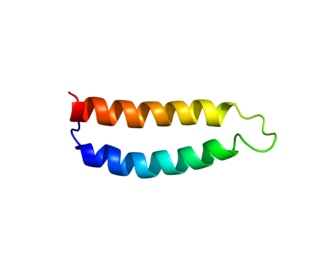
RalA-binding protein 1 is a protein that in humans is encoded by the RALBP1 gene.

Ral guanine nucleotide dissociation stimulator is a protein that is encoded by the RALGDS gene in humans.

Ras-related protein R-Ras is a protein that in humans is encoded by the RRAS gene.

Exocyst complex component 4 is a protein that in humans is encoded by the EXOC4 gene.
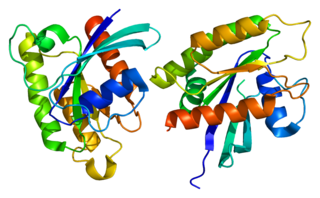
Ras-related protein R-Ras2 is a protein that in humans is encoded by the RRAS2 gene.

Exocyst complex component 2 is a protein that in humans is encoded by the EXOC2 gene.

Ras Related Glycolysis Inhibitor and Calcium Channel Regulator (RRAD) is a protein that in humans is encoded by the RRAD gene. RRAD is a Ras-related small GTPase that is regulated by p53 and plays a role in the regulation of aerobic glycolysis.

Exocyst complex component 3 is a protein that in humans is encoded by the EXOC3 gene.

Exocyst complex component 5 is a protein that in humans is encoded by the EXOC5 gene.

RalBP1-associated Eps domain-containing protein 2 is a protein that in humans is encoded by the REPS2 gene.

Exocyst complex component 8 is a protein that in humans is encoded by the EXOC8 gene.

Ras-related GTP-binding protein B is a protein that in humans is encoded by the RRAGB gene.


























